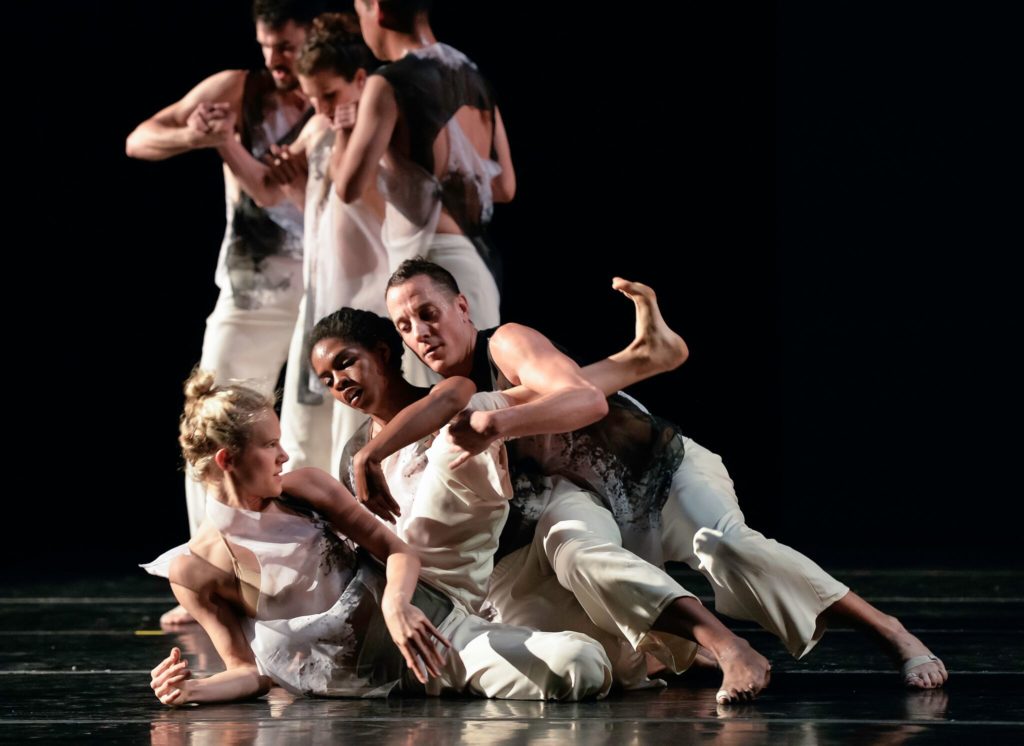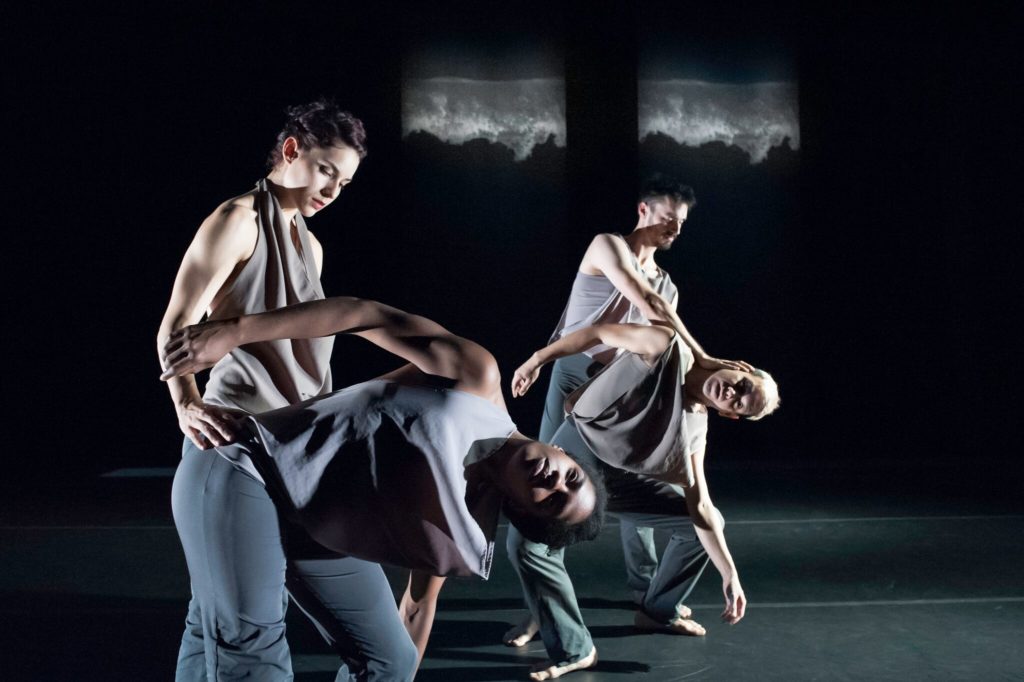

I don’t know anything about the inner workings of my car. And I don’t care to learn. I just want it to run. This attitude puts me at the mercy of mechanics who have a stake in my ignorance. Maybe a mechanic could easily explain to me what’s wrong with my car, teach me how to fix it, and send me on my merry way. But why would they want to do that? Surefire way to go out of business.
Many folks don’t know anything about the inner workings of a dance. And many don’t care. They just want to be entertained or inspired. I suppose one could argue that choreographers benefit from the obfuscation of their labor and craft. It makes dances and dancing look magical, unattainably virtuosic, a result of superhuman talent — special. But most of the time, in my experience, choreographers and dancers, rather than keeping the tools of their trade close to their chests in an act of professional boundary maintenance, often take the position of being verbally inarticulate about their creative processes and performance experiences—the old, “If I could talk about it or write about I wouldn’t have made a dance about it.”
Kate Weare is not one of those choreographers.
I met Kate in the late 1990s. We were performing together at ODC in the work of Kersti Grunditz. In the dressing room, Kate walked up to me and said something along the lines of, “Nice boobs.” As you can imagine, it was the beginning of a lasting friendship. Kate and I performed together a few more times after that, but mostly I’ve been following her career from her early works in the Bay Area to her illustrious career in New York, through knee injuries, marriage, and the birth of her daughter. Whenever Kate comes to town with her company or as a guest choreographer for ODC, it’s treated as a homecoming. Oakland born and raised, Weare remains a California girl even after 18 years in NYC. What does that mean? Well, for one thing, it means she body slams into jasmine bushes on our walks around the East Bay.
I would describe Kate, person and artist, as a sensualist, not in the mere pleasure-seeking sense—though pleasure is part of it—but in terms of her movement research methodology. She engages all six senses in the studio, privileging the “lower” ones, touch and kinesthesia. And along with her keen choreographic and directorial eye, she brings to her artistic practice the sense and sensibility of a dancer—her embodied knowledge of marley and wood floors, black box and proscenium theaters, contact with sweaty bodies, injury, and rehabilitation. As a dancer she’s got that big cat quality; she looks like she thinks with her four paws. As a choreographer she asks her dancers to slap, tickle, slide, rebound, melt, grind together, a seeming effort to exhaust the body’s limitless capacity for action and interaction. As dancer Nicole Diaz says, Kate’s “kinesthesia has a thick yet swift groundedness, a feral strength, and slicing precision.”
Kate and her New York-based Kate Weare Company (KWCo), are bringing Marksman to ODC Theater this month (October 5-7). We engaged in a lengthy email exchange for this article because her August days were filled with dance-making as DANCEworks Santa Barbara 2017 Choreographer-in-Residence, where she collaborated on Sin Salida/In Love I Broke Beyond with Esteban Moreno and Union Tanguera (France). This was our first “formal” conversation about her work, so I was interested in how she currently thinks about her trajectory as an artist, how her creative process has shifted over time, and why the PR for Marksman emphasize the work’s “abstraction.”
*
Sima Belmar: Marksman is called an “abstract work.” How does the idea of abstraction manifest in your process, in how you relate to the dancers that work with you?
Kate Weare: In the case of Marksman, I suppose it’s abstract in the sense that I tried to find feeling from within form…exploring states of energy and energy transfer between dancers rather than thinking about them directly as human beings (as I normally do). I tried to follow the energy in passing, in flux, rather than how it manifests or settles within an individual, though of course there is some of that too. I tried to think of the dancers as manifestations of energies and forces that fascinate me: sea jellies underwater, giant steel beams moving in air on a crane, objects intersecting and redirecting each other like dominoes, electricity and sludge, anchors and bouncing beans, sometimes sharks. Consequently, this is the most genderless work I think I’ve ever made.
Perhaps this is because Marksman was an exploration born from my experience of pregnancy and birth, a period during which I felt like my personhood and individuality were also not the issue. Nature worked through me inexorably. I’ve never in my life felt more clearly aimed at a purpose and yet not in control of it. It made me question all my willfulness up to that point, which suddenly seemed silly! It also struck a kind of awe in me, and a need to explore the way I instinctively fight to remain in control when outside forces shape me (and others) so powerfully from all directions in any case. I started thinking about “aim” as a metaphor for the nature/form of this work. I read about some teachings in archery (from various cultures, but especially Japanese) and how in order to aim with increasing accuracy you need to practice a release of control. True of many physical actions, including dancing…and probably life.
SB: This shift you’re describing, from working with your dancers “as human beings” to attending to energy, reminds me of other contemporary choreographers like Tere O’Connor and Bill T. Jones, who have talked about moving from work that is concerned with identity categories to more “abstract” or “formal” concerns, always with the understanding that unless you’re covered head to toe in stretchy Nikolais/Louis material, it’s hard for audiences to see it that way. Then you have someone like Ralph Lemon, whose work went in the other direction, from “abstraction” to a concern with identity. Of course, it’s more complicated than a mere binary or dialectic, but I wonder how you think about this sort of shifting discourse and practice.
KW: I think it may be a result of a very human issue in the dance world, which is that choreographers and small companies tend to start in the hothouse environment of families in a sense…friends and lovers (often only in the artistic sense) and then we grow slowly to professionalize and separate. When my first family turned over (and at the moment—by no coincidence, I can now see in retrospect—my biological family came into being) I needed breathing space, and also the space to privilege my inward experience over my responsibility to “see” others. This may or may not exactly be Tere’s reason, or Bill’s, but underneath it all I expect we all go through similar human struggles about connection and creation, cohesion and expansion, relationship and autonomy.

*
I corresponded with two dancers currently working with Kate, Thryn Saxon and Nicole Diaz.[1] Both corroborated Kate’s story of Marksman—“Marksman is abstract, more about space and time and energy than anything else” (Saxon), “It’s colder and focused on the inherent intelligence of pure energetic exchanges outside of human manipulation” (Diaz). But what stands out is the satisfaction these dancers feel in the studio, a sense of empowerment and deep physical research.
Saxon, who is in her first season with KWCo, said, “Her movement is about sensing, reacting and creating change, change in one’s own body, in the other dancers, in the room, in the world. The movement sensation is grounded, powerful and absolutely a full body experience. There is a readiness in the body that is required. This readiness produces an extremely high level of both sensitivity and power. It is incredibly physical, detailed, and precise.” For Diaz, in her third season with the company, “Kate stood apart from other choreographers in the way that she cut the gratuitousness out of my dancing. Her aim was not to tell me how to feel, but to question my intent and help facilitate how I expressed what I found important. She’s candid without being cruel. Open without being aimless. And passionate without being selfish. Her work makes me feel powerful.”
*
Marksman was born, in part, of a reflection on giving birth as a process of taking aim before a moving target. Talking and writing about dance seem to call for a similar approach. We can aim our words for the dance candidly, openly, passionately, and without thought of hitting the bullseye.
[1] You can get to know Diaz, Saxon, Julian De Leon, Kayla Farrish, Douglas Gillespie, Ryan Rouland Smith in the project through the company’s “Meet the Dancers of Marksman” reel at https://vimeo.com/189979878.


